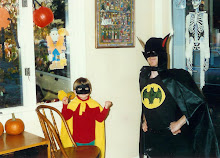So, while looking at a lot of photographs online, we often see a lot of digital noise (called grain in film, though the look of it is different) and it seems most people take offense at it. We've come to believe that the less noise, the more professional the image.
Generally, a lot of times, this is true. When using professional equipment, metering the light correctly, exposing correctly, and shooting under controlled conditions, we often see a lot less noise. We usually work to minimize it.
However, I've realized that in critiquing other people's work, I have sort of fallen into a stuck up opinion of noise and overexposed images (where the highlights are blown out). To try and overcome that, I've challenged myself to maximize the use of digital noise, and try to see what I could come up with. I decided to try this out during a shoot for images for a friend's small poetry book. 
I borrowed a 10D (I'm familiar with its noise patterns, though I don't own one myself, as I've used it to shoot stage before), and set it for 1600 ISO. The higher the ISO, the more noise or grain generally evident in a shot. I then used very simple low light hot lights (just some regular light bulbs in reflectors on stands), and collapsible reflectors for lighting, as using strobes usually gives you a softer light (well, not always, but don't worry about that now, lol). I also wanted the color shift from the lighting, so I did not set the color balance on the camera. Most of the effect was achieved in camera, though I did a little in processing the RAW files.
For the one you see above, I under exposed the image and brought it up two stops in RAW processing, which generally makes the grain more evident. This one below I overexposed in the highlights and underexposed in the shadow. It was pushed a tiny bit in processing, and slightly nudged in terms of contrast and saturation, but most of the color is simply achieved by leaving the color balance way off and using a gold reflector. Both of the shots were lit with just one light, and a very inexpensive one at that. Most of you can probably do something like this, and many of you probably have without knowing exactly why. Hopefully it's some food for thought. :)
Friday, July 8, 2005
Experiments In Digital Noise
Subscribe to:
Post Comments (Atom)

No comments:
Post a Comment